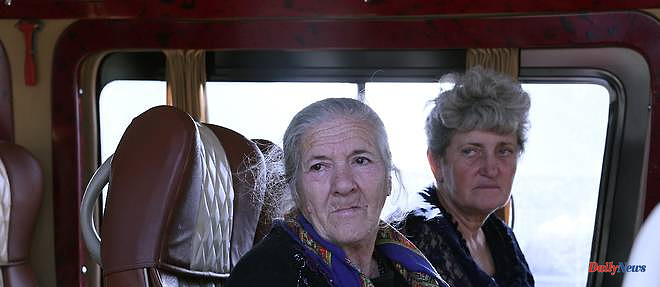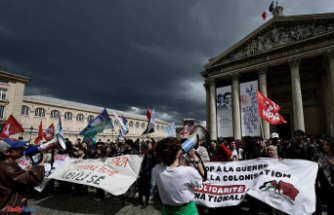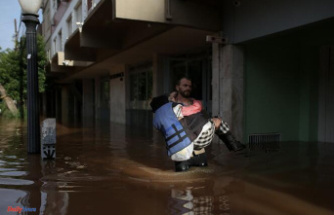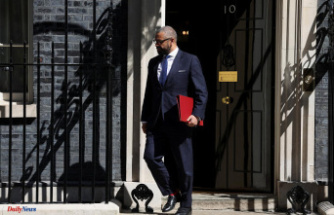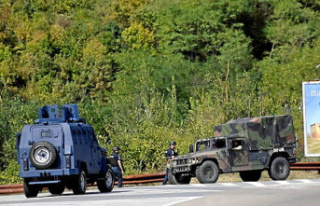Svetlana Isakhanian, 76, took the road to exile, from Nagorno Karabakh to Armenia, with only her green slippers, a handbag and her passport.
"That's all I have. I have no one, no relatives in Armenia, I don't know what I'm going to do," despairs the old lady, who is part of a first group of refugees entered Armenia on Sunday, at the Kornidzor border post, where the Armenian government set up a reception center.
She shows her precious Armenian passport. Like the vast majority of the 120,000 inhabitants of Nagorno Karabakh, she has two passports, a local red one, a blue one for traveling outside the enclave.
Around ten computers are lined up in the Kornidzor reception center: behind, volunteers take the names and contact details of refugees while members of the Armenian Red Cross improvise a volleyball game with the children or distribute food .
Svetlana Isakhanian explains that her house in Stepanakert, the "capital" of Nagorno Karabakh, was damaged by the bombings which accompanied Azerbaijan's lightning invasion this week of this Caucasian enclave populated mainly by Armenians.
But she arrives from the border village of Eghtsahogh. “I went to Eghtsahogh to visit the grave of my son, killed during the war in the 1990s, when they bombed the village,” she tells AFP special correspondents.
Nagorno Karabakh, annexed in 1921 by Soviet power to Azerbaijani territory, had in the past been the scene of two wars between the former republics of the USSR, Azerbaijan and Armenia: one from 1988 to 1994 (30,000 deaths) and the other in the fall of 2020 (6,500 deaths).
This time, the military operation was completed in 24 hours, the separatist forces having been no match for Baku, and Yerevan having refused to commit its troops to a new conflict in this territory.
The old Armenian lady also confirms that the inhabitants of Stepanakert face enormous difficulties in their everyday lives.
“My house was damaged by the bombings in Stepanakert. People are cooking outside because there is no more electricity, they are cooking over a wood fire. Those who come from the villages and have taken refuge in Stepanakert are sleeping outside,” she testifies.
“It would be impossible to return to live in Nagorno Karabakh” with the Azerbaijanis, she says, as the hatred is so deep between the two peoples in this region which unilaterally declared its independence from Baku in 1991, with the support of Yerevan. .
The role of religion is important there, between on one side Armenia, a Christian kingdom since the 4th century, and on the other Azerbaijan, a Shiite land on the banks of the Caspian.
In the crowd of refugees, Shamir, a 28-year-old farmer who did not give his name, left his village near the border with his wife.
"I left everything behind, my animals, everything. First, we thought only the residents of Eghtsahogh could leave, then we learned that we could too. We had 15 minutes to do our things , we couldn't take anything," says this exhausted-looking man.
"The village was surrounded by the Azerbaijani army. We had no food problems, we had vegetable gardens and the ICRC brought us flour," he assures us, after a first convoy of help from the International Committee of the Red Cross was able to enter Nagorno Karabakh on Saturday.
“When I realized that Artsakh (the name of Nagorno Karabakh in Armenian) was Azerbaijani, we decided to leave because no Armenian can live on Azerbaijani land,” confides the one who intends to settle in a region of Armenia where he has family.
But he left behind the grave of his three-year-old daughter. “I haven’t said goodbye to him because I hope to go back.”
24/09/2023 16:32:26 - Kornidzor (Armenia) (AFP) - © 2023 AFP

